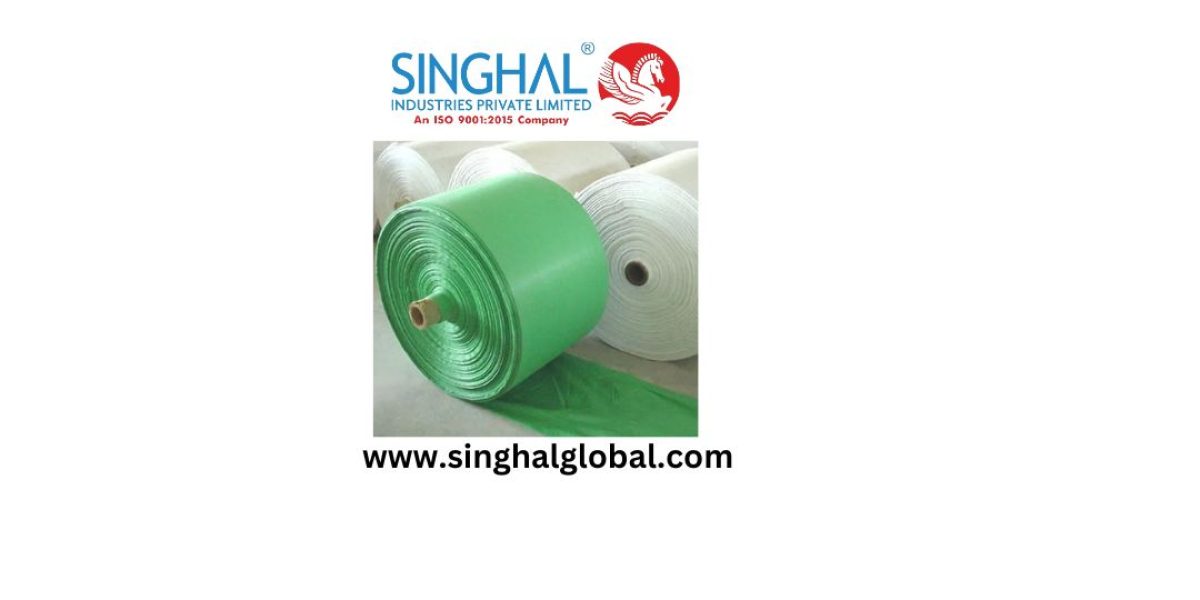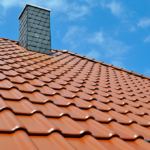Understanding the Strength and Structure Behind Industrial-Grade Fabric Solutions
PP woven fabric has emerged as one of the most relied-upon materials in various sectors ranging from agriculture and construction to packaging and logistics. Made from polypropylene, this fabric is crafted through a weaving process that brings together tapes of synthetic material to form a strong, flexible, and lightweight fabric solution. Known for its tensile strength and reusability, this fabric type serves the purpose of providing durable wrapping and storage options for both commercial and domestic needs. Businesses requiring cost-effective and long-lasting packaging solutions turn to this material for its adaptability and consistent performance. Whether it’s bundling produce or safeguarding bulk materials during transportation, the fabric meets various usage criteria effectively.
The production of Polypropylene Woven Fabrics Suppliers in Ahmedabad involves a meticulous extrusion and weaving process. Polypropylene granules are melted and stretched into flat tapes which are then woven using circular or flat looms to produce fabric rolls. The resulting product can be laminated or non-laminated depending on the intended application. Among the broad network of pp fabric manufacturers in india, several have adopted cutting-edge weaving technology and environmentally mindful manufacturing practices to meet both domestic and international demands. Their focus on quality assurance, strength optimization, and supply chain consistency ensures that businesses always have access to reliable fabric choices that suit different operational environments.
Applications That Prove Its Practical Utility Across Industries
The practical uses of this fabric are vast and diverse. In the agricultural sector, it is often used for making sacks to store grains, fertilizers, and animal feed. These sacks are not only tear-resistant but also protect the contents from moisture and pests, enhancing shelf life and reducing losses. Construction industries rely on it for temporary fencing, tarpaulin-like coverings, and even erosion control fabric. Its chemical-resistant nature makes it suitable for storing hazardous or corrosive materials safely. The transport and logistics industries, on the other hand, utilize these woven sacks and fabrics for bulk packaging of powders, minerals, chemicals, and other non-perishable goods.
Many polypropylene woven sacks manufacturers in Gujarat have built strong reputations based on their capacity to deliver products tailored to specific applications. Their offerings often include sacks with customized printing, UV protection layers, and moisture barriers, especially for companies that require both functionality and branding on their packaging. The fabric’s flexibility also allows for customized bag sizes, making it easier to handle, stack, and transport items in large quantities without compromising strength. These practical benefits give the material an edge over traditional packaging alternatives such as jute or paper sacks, especially when cost-effectiveness and durability are critical.
A Closer Look at Manufacturing Hubs and Their Capabilities
India has established itself as one of the global leaders in manufacturing and exporting polypropylene-based fabric products. In particular, regions like Gujarat and cities like Ahmedabad have become industrial hubs for polypropylene woven fabrics suppliers in Ahmedabad. These suppliers operate with advanced loom technologies, automated production lines, and rigorous quality control systems that adhere to international standards. They offer wide-ranging options including laminated and unlaminated fabric, colored or transparent rolls, and fabric with anti-slip or anti-static features, depending on customer needs.
What truly sets these suppliers apart is their adaptability to emerging trends such as eco-conscious packaging and recyclable product development. Many manufacturing plants have adopted solar-powered units and water-efficient processes to lower their carbon footprint. Their commitment to ethical production, timely delivery, and value-added services such as product customization, quality certification, and after-sales support has positioned Indian suppliers at the forefront of global competition. This widespread industrial ecosystem not only fuels domestic demand but also supplies fabric and sacks to countries across Asia, Europe, and Africa, helping elevate India’s status in the global packaging industry.
Features That Make This Fabric a Preferred Choice
There are multiple reasons why polypropylene woven fabric has gained widespread recognition. One of its most compelling features is its high tensile strength, which allows it to hold heavy goods without tearing or breaking. Additionally, it is resistant to various environmental elements including moisture, UV rays, and certain chemicals. These attributes make it suitable for both indoor and outdoor use, regardless of weather conditions. The breathability of the non-laminated versions also allows air circulation, which is beneficial when storing perishable goods or agricultural produce.
This fabric also scores high on sustainability when compared to alternatives. Most variants are recyclable and reusable, especially in agricultural and storage settings where single-use packaging is being phased out. Being lightweight, it reduces freight charges and handling costs, which is another reason it is widely adopted in the logistics sector. Its compatibility with heat-sealing and sewing processes makes it easy to integrate into automated packaging lines or manual systems. Whether it’s used to make bale covers, sandbags, or shipping sacks, its consistent performance enhances operational reliability across multiple industries.
Innovative Developments and Technological Upgrades in Fabric Production
With technological evolution, the traditional woven fabric industry has seen a substantial upgrade in recent years. New-generation looms now allow faster production rates and more consistent weaves, resulting in better product quality and reduced wastage. Innovations such as biaxially oriented polypropylene films combined with woven fabric backing have created hybrid solutions for demanding environments. These combinations offer added strength, clarity, and barrier properties. In addition, the advent of advanced color printing and logo branding directly on the fabric has transformed it into a marketing tool as well as a functional solution.
Some Polypropylene Woven Sacks Manufacturers in Gujarat are exploring biodegradable additives and organic material blends that reduce the long-term environmental impact of discarded bags. Efforts are also being made to create UV-stabilized and flame-retardant versions of the fabric for use in specialized sectors such as mining, oil, and gas. These research and development initiatives are often supported by national industry bodies and private investments, aiming to enhance the global competitiveness of the Indian packaging industry. As a result, customers today can choose from an increasingly diverse portfolio of polypropylene-based products that combine strength, sustainability, and visual appeal.
Sustainability and Environmental Awareness Driving Demand
As industries across the globe push for greener alternatives, the environmental benefits of woven polypropylene fabric are being spotlighted more than ever. It can be reused multiple times and, in many cases, recycled into new products, thereby reducing landfill dependency. Many manufacturers are now offering certified recyclable variants that comply with global sustainability norms. As part of this shift, some factories have started producing rolls made from post-consumer waste, further contributing to the circular economy model.
In the context of global climate challenges, businesses are choosing products that not only perform well but also align with their corporate social responsibility goals. Fabric packaging solutions are a big part of this shift. With awareness growing among end-users, there is increasing pressure on manufacturers and suppliers to improve the lifecycle of their products, reduce emissions, and maintain traceability. From reducing energy usage to adopting biodegradable inks for printing, each step counts toward a more sustainable manufacturing footprint. It’s clear that polypropylene woven fabric is not just a packaging material anymore—it’s part of a broader ecological movement.
Economic Impact and Global Market Reach of the Industry
The woven fabric sector contributes significantly to India’s industrial economy. With thousands employed in production units, support services, and logistics, the industry acts as a critical pillar of the manufacturing ecosystem. As international demand continues to rise, many polypropylene woven fabrics suppliers in Ahmedabad have increased export capabilities, tapping into markets in Europe, Southeast Asia, and the Middle East. Exporters benefit from India’s infrastructural development and favorable trade policies that support seamless shipping and international compliance.
These economic contributions go beyond simple trade. By offering scalable solutions to industries in both developed and developing nations, the woven fabric industry also supports agricultural productivity, disaster relief logistics, and infrastructure development globally. With ongoing investment in automation, skill development, and R&D, Indian manufacturers are poised to increase their market share in the coming decade. Their ability to offer high-quality products at competitive prices remains one of the key strengths driving consistent global interest.
Conclusion
The use of PP Fabric Manufacturers in India has expanded far beyond its original role as a simple packaging material. Today, it stands as a symbol of innovation, strength, and sustainability across multiple sectors. Its unmatched utility, cost-efficiency, and eco-friendliness make it an indispensable solution in modern industry. Whether for storing, transporting, or protecting goods, this fabric continues to deliver exceptional value and dependability. With continuous advancements in technology, environmental responsibility, and global trade, its future looks promising and transformative. As businesses evolve, so too will their reliance on smart, sustainable fabric solutions that blend performance with responsibility.
Frequently Asked Questions
What are the primary benefits of using this type of fabric for packaging?
This fabric offers excellent strength, flexibility, moisture resistance, and cost-effectiveness. It is ideal for heavy-duty use while being lightweight and easy to handle.
Can this fabric be customized for different industry needs?
Yes, manufacturers offer customizations including size, color, printing, UV protection, and lamination to match the specific requirements of industries such as agriculture, construction, and logistics.
Is this fabric an environmentally friendly option?
Many variants are recyclable and reusable, making them a better alternative to single-use plastic. Some manufacturers even produce eco-friendly options made from recycled material.
How does it compare with traditional materials like jute or paper?
Compared to jute or paper, this fabric is stronger, more water-resistant, and longer-lasting. It’s also less prone to tearing and more suited for modern logistics and storage systems.












